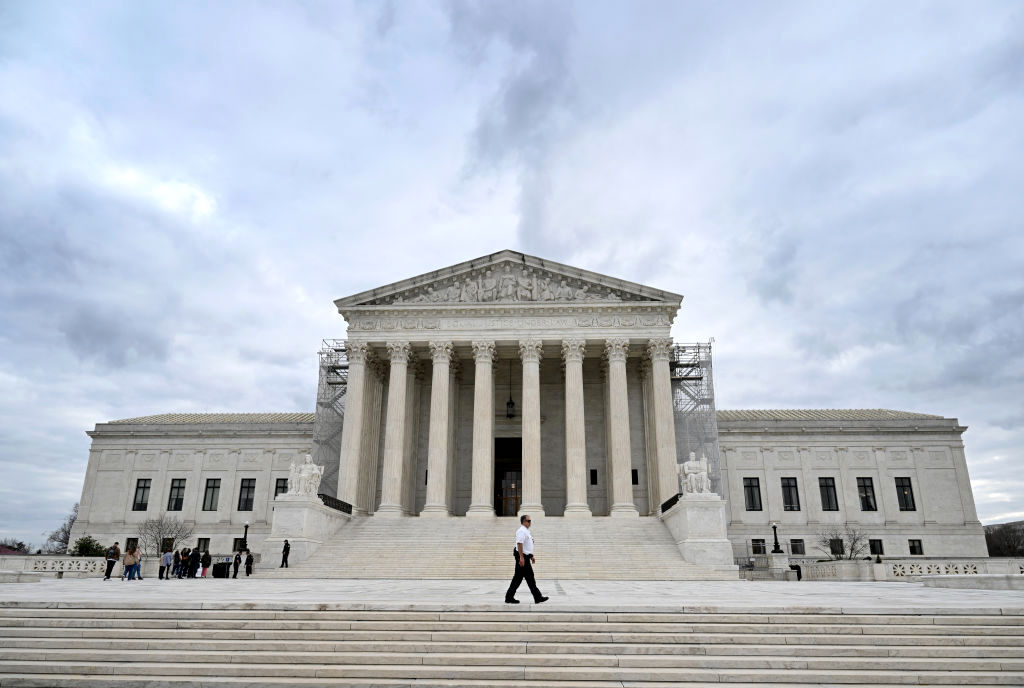Introduction:
California’s Supreme Court recently handed down a landmark ruling that has reverberated throughout the state’s business landscape, fundamentally altering the dynamics of worker classification. This pivotal decision has compelled businesses across various industries to reassess their employment practices and confront the intricate nuances of distinguishing between independent contractors and employees.
At the heart of this ruling lies a profound reevaluation of the traditional criteria governing worker classification, ushering in a new era of scrutiny and accountability. The ramifications extend far beyond legal jargon, striking at the core of how businesses engage with their workforce and the broader implications for labor rights and economic equity.
This comprehensive examination seeks to unpack the intricacies of California’s Supreme Court ruling on independent contractors, providing a nuanced understanding of its origins, implications, and practical implications for businesses and workers alike. Through a multifaceted exploration, we aim to illuminate the complexities inherent in navigating the evolving landscape of employment law in California.
In this exploration, we delve into the historical context that underpins the classification of independent contractors in California, tracing the evolution of legal frameworks and societal expectations. Moreover, we dissect the dynamics of the Supreme Court ruling, dissecting the key factors considered by the judiciary and the ripple effects cascading through various sectors of the economy.
As we navigate this terrain, we confront the fundamental question of worker classification criteria, dissecting the ABC test and its implications for businesses seeking to navigate the labyrinth of compliance. Additionally, we explore the practical ramifications for businesses, from financial considerations to operational adjustments necessitated by the reclassification of workers.
Furthermore, we shed light on the impact of the ruling on workers themselves, elucidating the rights, benefits, and potential challenges associated with reclassification from the perspective of those directly affected. Through real-world case studies and examples, we glean insights into the strategies employed by businesses to adapt to this paradigm shift and the lessons learned from early adopters.
Looking ahead, we venture into the future outlook shaped by this seminal ruling, forecasting potential legislative responses, long-term implications for the gig economy, and the trajectory of worker classification laws in California. Ultimately, we conclude with a synthesis of key insights and a call to action for businesses and policymakers to navigate this evolving landscape with foresight and responsibility.
In essence, this exploration serves as a beacon of clarity amidst the complexities of California’s evolving labor landscape, empowering stakeholders with the knowledge and understanding to navigate the implications of the Supreme Court’s ruling on independent contractors.
Background of Independent Contractors in California:
The classification of independent contractors in California is deeply rooted in a historical context shaped by evolving legal frameworks and societal dynamics. Understanding the nuances of this classification requires a journey through time, tracing the origins of worker classification and its implications for labor rights and economic equity.
At its core, the concept of independent contractors embodies the principle of autonomy and flexibility, offering individuals the opportunity to engage in work on their own terms. Historically, this classification has been instrumental in fostering entrepreneurship and innovation, enabling businesses to tap into specialized skills and expertise without assuming the responsibilities of traditional employer-employee relationships.
However, the landscape of worker classification in California has been marked by a complex interplay of legal precedent, legislative action, and shifting societal norms. The evolution of this classification reflects the ongoing tension between the need to protect workers’ rights and the imperative to foster economic growth and innovation.
Throughout history, California has grappled with defining the boundaries of independent contractor status, navigating a maze of legal interpretations and judicial rulings. From landmark court decisions to legislative reforms, the state has sought to strike a delicate balance between promoting business flexibility and safeguarding worker rights.
The importance of worker classification cannot be overstated, as it shapes the rights, benefits, and protections afforded to individuals in the workplace. From eligibility for healthcare and retirement benefits to protections against discrimination and harassment, the classification of workers carries profound implications for their well-being and livelihood.
Against this backdrop, the California Supreme Court’s ruling on independent contractors represents a pivotal moment in the ongoing saga of worker classification. By reexamining the criteria used to differentiate between independent contractors and employees, the court has thrust this issue into the spotlight, prompting businesses and policymakers alike to confront the complexities of modern employment relationships.
As we delve into the background of independent contractors in California, we uncover the rich tapestry of legal precedent, legislative history, and societal values that have shaped this classification over time. Through this exploration, we gain a deeper appreciation for the challenges and opportunities inherent in navigating the ever-evolving landscape of worker classification in the Golden
State.
Dynamics of the Supreme Court Ruling:
The California Supreme Court’s recent ruling on independent contractors represents a seismic shift in the legal landscape, with far-reaching implications for businesses, workers, and the broader economy. At its core, the ruling signifies a departure from traditional approaches to worker classification, ushering in a new era of scrutiny and accountability.
The essence of the ruling lies in its reinterpretation of the criteria used to determine whether an individual qualifies as an independent contractor or an employee. Central to this reinterpretation is the adoption of the ABC test, a stringent standard that places a premium on worker classification based on three primary factors: control over work performance, the nature of the work, and whether the individual is engaged in an independent trade or business.
By prioritizing these factors, the court aims to provide clarity and consistency in the classification of workers, mitigating the potential for misclassification and the exploitation of vulnerable workers. However, the adoption of the ABC test also introduces new challenges for businesses, requiring a thorough reassessment of their employment practices and contractual relationships.
Key to understanding the dynamics of the Supreme Court ruling is an appreciation of the factors considered by the judiciary in arriving at its decision. Beyond legal technicalities, the court grappled with broader questions of economic equity, labor rights, and the evolving nature of work in the digital age. In doing so, it sought to strike a delicate balance between promoting business innovation and protecting the interests of workers.
The legal implications of the ruling are profound, reverberating through industries ranging from gig economy platforms to traditional brick-and-mortar businesses. For businesses, compliance with the ABC test entails a fundamental reevaluation of their workforce composition, contractual agreements, and operational practices. Failure to adhere to the new standard carries significant legal and financial risks, including potential fines, penalties, and litigation.

Moreover, the ruling has sparked a broader conversation about the future of work and the rights of workers in an increasingly gig-centric economy. It has forced businesses to confront difficult questions about the nature of employment relationships and the responsibilities they owe to their workforce. At the same time, it has empowered workers to assert their rights and demand fair treatment in the workplace.
As we navigate the dynamics of the Supreme Court ruling, we confront the complexities inherent in balancing competing interests and values. From legal intricacies to practical implications, the ruling challenges businesses and policymakers to adapt to a new paradigm of worker classification, one that prioritizes fairness, transparency, and accountability. Through a nuanced understanding of these dynamics, stakeholders can navigate the evolving landscape with foresight and responsibility, ensuring a more equitable and sustainable future for workers and businesses alike.
Criteria for Worker Classification:
The criteria for worker classification lie at the heart of the California Supreme Court’s ruling on independent contractors, serving as the linchpin of the judiciary’s efforts to provide clarity and consistency in employment relationships. Central to this framework is the adoption of the ABC test, a three-pronged standard that sets rigorous criteria for determining whether an individual qualifies as an independent contractor or an employee.
The first prong of the ABC test, often referred to as “A,” focuses on the degree of control exerted by the hiring entity over the performance of the work. Under this criterion, individuals are more likely to be classified as employees if the hiring entity exercises significant control over how, when, and where the work is performed. Conversely, individuals who retain substantial autonomy in determining the methods and means of their work are more likely to be classified as independent contractors.
The second prong of the ABC test, known as “B,” examines the nature of the work performed by the individual in relation to the hiring entity’s core business. If the individual’s work is integral to the hiring entity’s business operations, they are more likely to be classified as an employee. Conversely, if the individual’s work is ancillary or peripheral to the hiring entity’s primary business activities, they are more likely to be classified as an independent contractor.
The third and final prong of the ABC test, denoted as “C,” focuses on whether the individual is engaged in an independent trade, occupation, or business. This criterion considers factors such as the individual’s level of investment in their business, their opportunity for profit or loss, and their ability to provide services to other clients or customers. Individuals who demonstrate a genuine independent business presence are more likely to be classified as independent contractors under this prong.
Compared to previous classification standards, such as the multi-factor Borello test, the ABC test sets a higher bar for establishing independent contractor status. Its strict criteria leave little room for interpretation, requiring businesses to carefully assess the nature of their relationships with workers and the extent of control exerted over them.
However, applying the ABC test is not without its challenges. Businesses operating in dynamic and evolving industries may struggle to navigate the nuances of worker classification, particularly in cases where the nature of work blurs traditional distinctions between employees and independent contractors. Moreover, the rigid application of the ABC test may have unintended consequences, potentially disrupting established business models and stifling innovation.
As businesses grapple with the criteria for worker classification, they must carefully evaluate the implications of the ABC test for their operations and take proactive steps to ensure compliance. By understanding the nuances of each prong and the broader context in which they operate, businesses can navigate the complexities of worker classification with confidence and integrity, fostering a more equitable and sustainable employment landscape for workers and businesses alike.
Impact on Businesses:
The California Supreme Court’s ruling on independent contractors has sent shockwaves through the business community, prompting a wave of uncertainty and upheaval as businesses grapple with the implications of the new classification standard. At the heart of this seismic shift lies the profound impact on businesses across a wide range of industries, from tech startups to traditional brick-and-mortar establishments.
One of the primary challenges facing businesses in the wake of the ruling is the financial burden associated with reclassification. Moving workers from independent contractor status to employee status can have significant cost implications, including increased payroll taxes, benefits expenses, and administrative overhead. For many businesses, particularly small and medium-sized enterprises operating on tight margins, these additional costs represent a substantial financial strain.
Moreover, the potential for legal exposure looms large for businesses that fail to comply with the new classification standard. The California Supreme Court’s ruling opens the door to a wave of litigation from workers seeking reclassification and back wages, as well as enforcement actions from government agencies tasked with upholding labor laws. The prospect of costly fines, penalties, and legal fees adds to the already considerable financial pressure facing businesses in the wake of the ruling.
Beyond the immediate financial considerations, businesses must also contend with the operational challenges associated with reclassification. Adjusting to the new classification standard requires a thorough reassessment of workforce composition, contractual agreements, and operational practices. For gig economy platforms and other businesses reliant on independent contractors, this may entail significant restructuring of business models and operational workflows.
Furthermore, the ruling has broader implications for the future of work and the gig economy. Businesses operating in these sectors must grapple with questions about the nature of employment relationships and the responsibilities they owe to their workforce. The shift toward employee status may necessitate changes in working conditions, scheduling practices, and access to benefits, posing additional challenges for businesses seeking to maintain flexibility and competitiveness in the marketplace.
Despite these challenges, the ruling also presents opportunities for businesses to demonstrate their commitment to fair labor practices and corporate responsibility. By proactively addressing worker classification issues and implementing policies that prioritize the well-being of their workforce, businesses can enhance their reputation, attract top talent, and foster a culture of trust and transparency.
In navigating the impact of the California Supreme Court’s ruling, businesses must adopt a proactive and strategic approach to compliance. By understanding the financial, legal, and operational implications of reclassification, businesses can mitigate risks, seize opportunities, and navigate the evolving landscape of employment law with resilience and integrity. Through proactive engagement with stakeholders, including workers, policymakers, and industry peers, businesses can shape a more equitable and sustainable future for workers and businesses alike.
Impact on Workers:
The California Supreme Court’s landmark ruling on independent contractors has profound implications for workers across the state, reshaping the landscape of employment relationships and redefining the rights and protections afforded to individuals in the workplace. At the heart of this seismic shift lies the empowerment of workers to assert their rights and demand fair treatment, marking a significant milestone in the ongoing struggle for labor rights and economic equity.
One of the most immediate impacts of the ruling is the potential for increased rights and benefits for workers who are reclassified as employees. By transitioning from independent contractor status to employee status, workers gain access to a range of protections and benefits, including minimum wage guarantees, overtime pay, unemployment insurance, workers’ compensation, and eligibility for healthcare and retirement benefits. These protections provide a vital safety net for workers, ensuring they are not left vulnerable to exploitation or economic insecurity.
Moreover, the reclassification of workers as employees may lead to improvements in working conditions and job security. As employees, workers are entitled to certain rights and protections under state and federal labor laws, including protections against discrimination, harassment, and wrongful termination. Additionally, employee status may afford workers greater bargaining power and collective bargaining rights, enabling them to negotiate for fair wages, benefits, and working conditions.
However, the transition from independent contractor to employee status is not without its challenges and potential drawbacks for workers. While employee status may offer greater protections and benefits, it may also entail trade-offs in terms of flexibility and autonomy. Many workers value the flexibility and independence afforded by independent contractor status, and the transition to employee status may restrict their ability to set their own schedules and work arrangements.
Furthermore, the reclassification of workers may have broader implications for the gig economy and the future of work. As businesses adjust to the new classification standard, they may implement changes to their business models and operational practices that impact the way work is structured and performed. This may result in shifts in employment patterns, job opportunities, and career pathways for workers in affected industries.
Ultimately, the impact of the California Supreme Court’s ruling on workers is multifaceted and complex, encompassing both opportunities and challenges. While reclassification as employees may offer greater rights and protections for workers, it may also entail trade-offs in terms of flexibility and autonomy. As workers navigate this new landscape, it is essential that they have access to information, resources, and support to advocate for their rights and ensure they are treated fairly and equitably in the workplace. Through collective action and solidarity, workers can leverage the power of their voices to shape a future of work that prioritizes dignity, fairness, and economic justice for all.
Strategies for Compliance:
In the wake of the California Supreme Court’s ruling on independent contractors, businesses are faced with the daunting task of navigating the complexities of worker classification and ensuring compliance with the new standard. As they grapple with the implications of the ruling, businesses must adopt a proactive and strategic approach to compliance, leveraging legal expertise, operational resources, and stakeholder engagement to mitigate risks and seize opportunities.
One of the first steps for businesses seeking to ensure compliance with the new classification standard is to conduct a comprehensive assessment of their workforce composition and contractual relationships. This may involve reviewing existing agreements, contracts, and job descriptions to ensure they accurately reflect the nature of the employment relationship and the degree of control exerted by the hiring entity.
Moreover, businesses must familiarize themselves with the criteria outlined in the ABC test and evaluate their practices against these standards. By understanding the nuances of each prong of the test, businesses can identify areas of potential risk and take proactive steps to address them. This may include implementing policies and procedures to minimize the degree of control exerted over workers, reevaluating job responsibilities to ensure they are consistent with independent contractor status, and providing training and support to managers and supervisors on best practices for engaging independent contractors.
Additionally, businesses must prioritize communication and engagement with their workforce, fostering open and transparent dialogue about the implications of the ruling and the steps being taken to ensure compliance. By soliciting feedback from workers and addressing their concerns in a timely and responsive manner, businesses can build trust and credibility within their workforce, mitigating the risk of litigation and enforcement actions.
Furthermore, businesses should seek guidance from legal and compliance experts to navigate the complexities of worker classification and ensure compliance with applicable laws and regulations. Legal counsel can provide invaluable guidance on interpreting the ABC test, assessing risk exposure, and developing compliance strategies tailored to the unique needs and circumstances of each business.
Finally, businesses must remain vigilant and adaptable in the face of evolving legal and regulatory developments. As legislative and judicial interpretations of worker classification continue to evolve, businesses must stay informed of changes that may impact their compliance obligations and adjust their practices accordingly.
By adopting a proactive and strategic approach to compliance, businesses can navigate the complexities of worker classification with confidence and integrity, ensuring they uphold the rights and protections of their workforce while maintaining operational efficiency and competitiveness. Through collaboration, communication, and commitment to best practices, businesses can mitigate risks, seize opportunities, and thrive in the ever-changing landscape of employment law in California.
Case Studies and Examples:
Real-world examples provide invaluable insights into the practical implications of the California Supreme Court’s ruling on independent contractors, offering a glimpse into how businesses are navigating the complexities of worker classification and adapting to the new regulatory landscape. By examining these case studies and examples, we can glean valuable lessons and best practices for ensuring compliance and mitigating risks in various industries and contexts.
One example of a business affected by the ruling is a ride-hailing company that relies heavily on independent contractors to provide transportation services. In response to the ruling, the company has implemented changes to its business model and operational practices, including revising driver contracts and employment policies to align with the criteria outlined in the ABC test. Additionally, the company has invested in technology and infrastructure to track and monitor driver behavior and performance, ensuring compliance with regulatory requirements while maintaining operational efficiency.
Another example is a delivery service that utilizes a network of independent contractors to fulfill orders and distribute goods. In light of the ruling, the company has implemented stricter oversight and control measures to ensure compliance with the ABC test. This includes providing training and guidance to contractors on best practices for completing deliveries and adhering to company policies and procedures. Additionally, the company has revised its contracts and agreements to clarify the nature of the employment relationship and mitigate the risk of misclassification.
Furthermore, a tech startup that relies on a contingent workforce of freelance developers and designers is grappling with the implications of the ruling on its business operations. In response, the company has instituted new policies and procedures to ensure compliance with the ABC test, including conducting regular assessments of contractor relationships and providing additional support and resources to contractors to help them establish their independent business presence. Additionally, the company is exploring alternative staffing models, such as hiring more employees or engaging with third-party staffing agencies, to mitigate the risk of misclassification and ensure compliance with regulatory requirements.
These case studies and examples underscore the diverse and nuanced challenges facing businesses in the wake of the California Supreme Court’s ruling on independent contractors. By examining how businesses in different industries and contexts are responding to the ruling, we can identify common themes, best practices, and pitfalls to avoid in ensuring compliance and navigating the complexities of worker classification. Through proactive engagement, collaboration, and innovation, businesses can adapt to the new regulatory landscape and thrive in the evolving world of employment law in California.
Future Outlook:
The California Supreme Court’s ruling on independent contractors marks a watershed moment in the ongoing evolution of employment law in the state, with far-reaching implications for businesses, workers, and the broader economy. As stakeholders grapple with the immediate impacts of the ruling, attention is increasingly turning to the future outlook and long-term implications of this seminal decision.
One area of focus for policymakers and legislators is the potential for legislative responses to the ruling. In the wake of the decision, there has been renewed interest in exploring legislative reforms to clarify and refine the criteria for worker classification, providing businesses with greater certainty and flexibility in navigating the complexities of employment relationships. Additionally, there may be efforts to address broader issues related to labor rights, economic equity, and the gig economy, laying the groundwork for a more equitable and sustainable future for workers and businesses alike.
Moreover, the ruling has sparked a broader conversation about the future of work and the gig economy, prompting stakeholders to reexamine existing norms and practices and envision new paradigms for organizing and regulating employment relationships. This includes exploring alternative models of workforce management, such as worker cooperatives, platform cooperatives, and portable benefits systems, that prioritize fairness, flexibility, and economic security for workers.
Furthermore, the ruling may have profound implications for the gig economy and the broader labor market. As businesses adjust to the new classification standard, they may implement changes to their business models and operational practices that reshape the nature of work and employment relationships. This could include shifts in the composition of the workforce, the adoption of new technologies and platforms, and the emergence of new forms of employment and entrepreneurship.
Looking ahead, it is clear that the California Supreme Court’s ruling on independent contractors will continue to reverberate through the state’s economy for years to come, shaping the trajectory of employment law, labor rights, and economic opportunity. By embracing innovation, collaboration, and inclusive policymaking, stakeholders can harness the transformative potential of this ruling to build a more equitable, resilient, and sustainable future for workers and businesses in California and beyond.
Conclusion:
In conclusion, the California Supreme Court’s ruling on independent contractors represents a watershed moment in the ongoing evolution of employment law in the state, with profound implications for businesses, workers, and the broader economy. Through a comprehensive examination of the ruling and its impacts, we have gained a deeper understanding of the complexities inherent in navigating the intricacies of worker classification and ensuring compliance with the new standard.
The ruling has forced businesses to confront difficult questions about the nature of employment relationships and the responsibilities they owe to their workforce. It has sparked a wave of uncertainty and upheaval as businesses grapple with the financial, legal, and operational challenges of reclassification. However, it has also presented opportunities for businesses to demonstrate their commitment to fair labor practices and corporate responsibility, fostering a culture of trust, transparency, and accountability in the workplace.
For workers, the ruling holds the promise of increased rights, protections, and benefits, providing a vital safety net against exploitation and economic insecurity. However, it also poses challenges in terms of adapting to changes in working conditions, job security, and career pathways. By advocating for their rights and engaging in collective action, workers can leverage the power of their voices to shape a future of work that prioritizes dignity, fairness, and economic justice for all.
Looking ahead, the future outlook for employment law in California is marked by uncertainty and opportunity. Legislative reforms, technological innovations, and shifting societal norms will continue to shape the landscape of worker classification and employment relationships. By embracing innovation, collaboration, and inclusive policymaking, stakeholders can harness the transformative potential of the ruling to build a more equitable, resilient, and sustainable future for workers and businesses in California and beyond.
In essence, the California Supreme Court’s ruling on independent contractors underscores the need for proactive engagement, strategic planning, and a commitment to fairness and integrity in the workplace. By navigating the complexities of worker classification with foresight and responsibility, businesses and workers alike can pave the way for a future of work that fosters dignity, equality, and opportunity for all.





